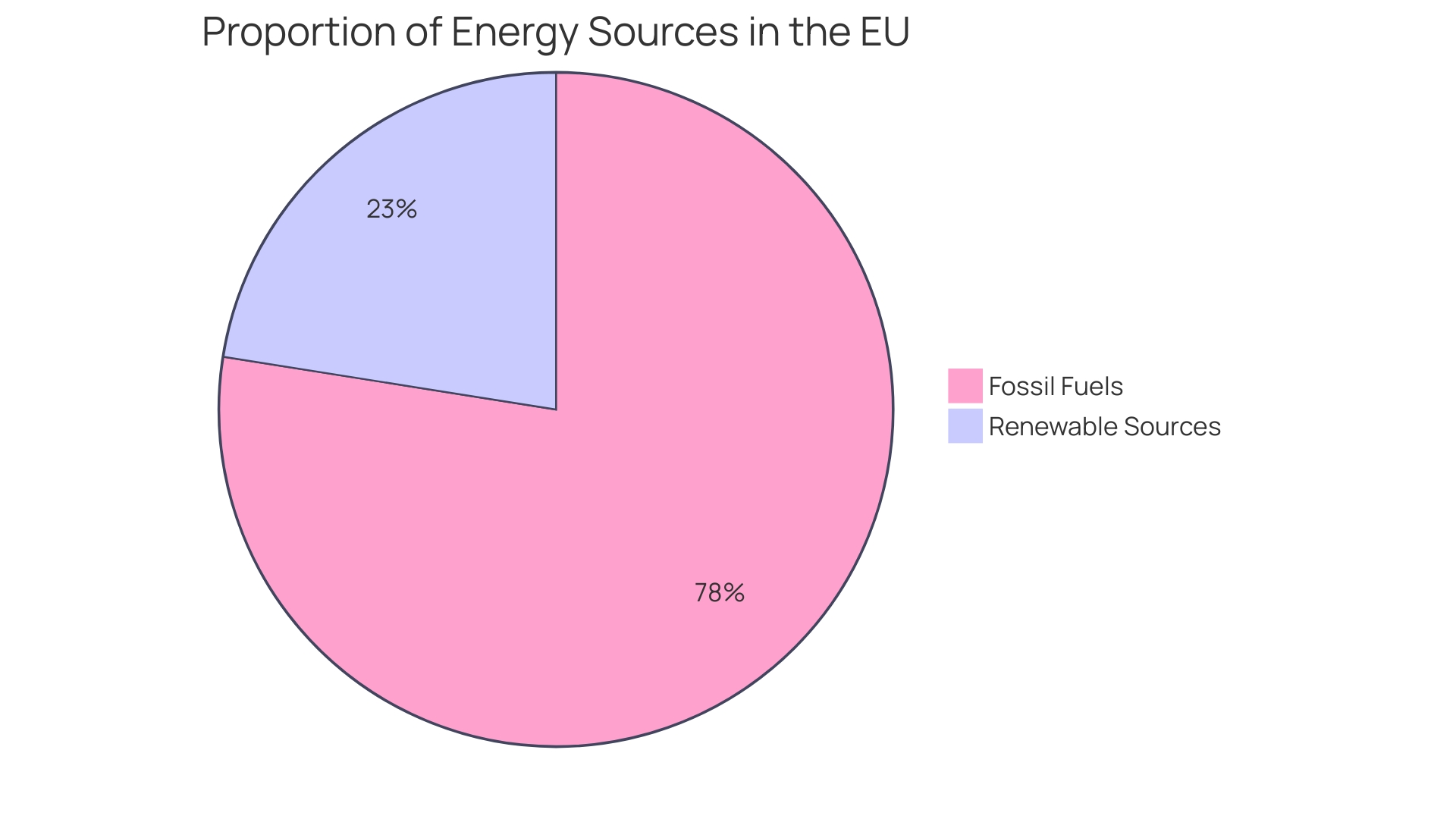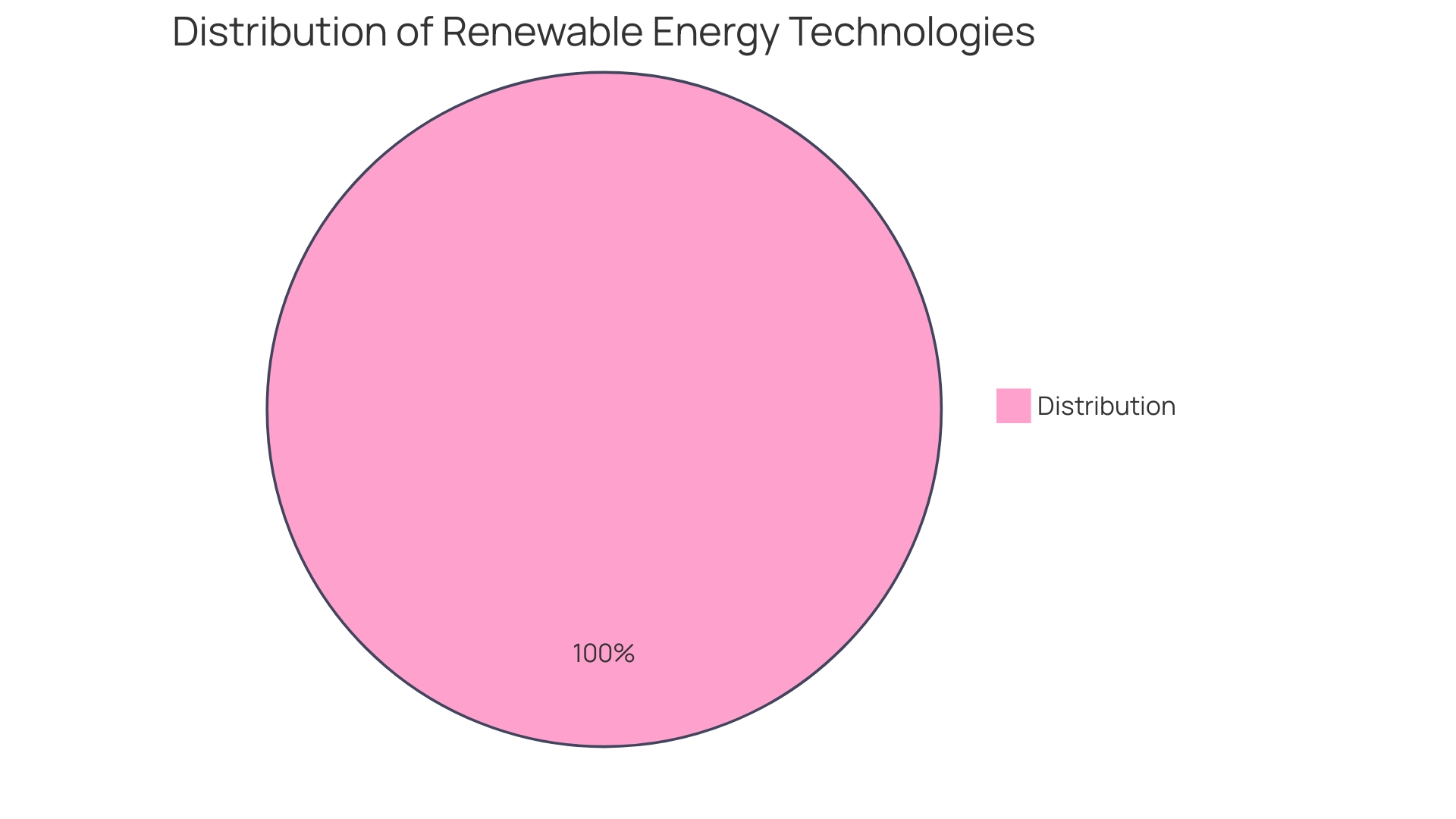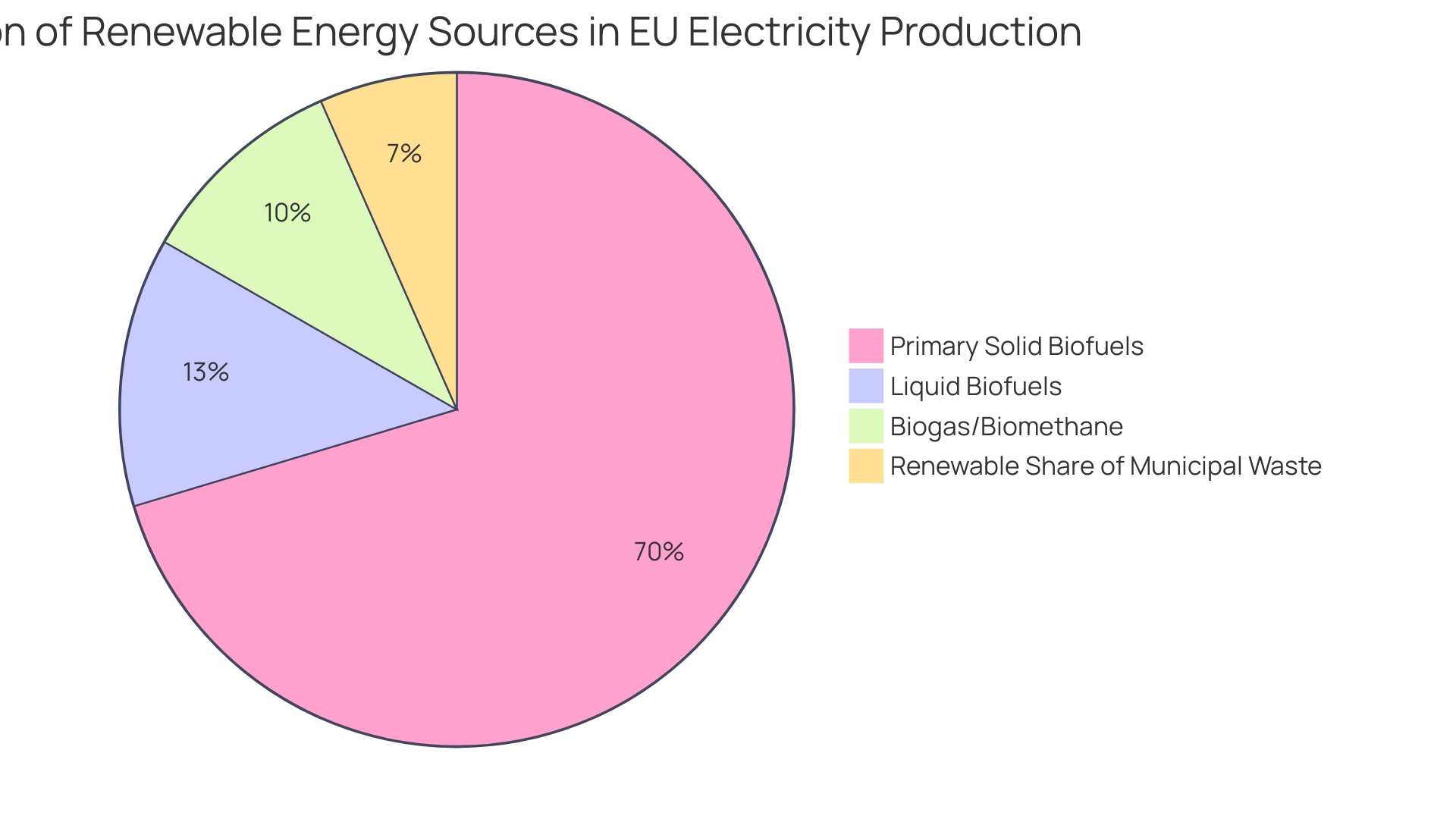Introduction
Biofuels have emerged as a crucial component in achieving energy security and sustainability, offering a renewable alternative to imported oil and contributing to climate change mitigation. With various conversion technologies, biofuels are synthesized from biomass, providing energy-dense liquids and gases. This article explores the importance of biofuels in fostering energy autonomy, addressing environmental concerns, and creating employment opportunities.
It also delves into market trends, challenges, renewable energy policies, and emerging technologies in the biofuel industry. As the world seeks to transition away from fossil fuels, biofuels play a pivotal role in shaping the future of renewable energy.
The Importance of Biofuels in Energy Security and Sustainability
Biofuels, harnessed from biomass, represent a pivotal shift towards renewables, diminishing reliance on imported oil while contributing positively to climate change mitigation and economic proliferation. These fuels are synthesized through various conversion technologies, enabling the transformation of organic matter into energy-dense liquids and gases. With advancements in biofuel, nations can achieve greater self-sufficiency and foster sustainability. For example, a thorough examination of the Caribbean's power situation uncovers the possibility for bioenergy to greatly reduce carbon emissions and generate job prospects. Despite the inherent challenges, such as the need for meticulous planning and consideration of the environmental impact, bioenergy offers a promising avenue for the region's decision-makers to navigate towards a more sustainable power paradigm.
Recent data indicates a concerted effort within the European Union to transition from natural gas to greener alternatives like biomethane and biogas. The EU's native biogas production witnessed an increase in 2021, indicating a collective shift towards independence in terms of power and reduced greenhouse gas emissions. Notably, primary solid biofuels account for the majority of bioenergy, followed by liquid biofuels and biogas. The strategic promotion of these resources aligns with the EU's REPowerEU plan, underscoring a commitment to sustainable biomethane production.
Furthermore, biofuels' versatility allows for a diverse range of biomass sources to be employed, addressing food security concerns by incorporating non-edible feedstock. As the industry evolves, the biofuel production process increasingly parallels that of crude oil refining, cementing biofuels' role as 'drop-in' fuels compatible with existing transportation systems. Analyst Ravindra Puranik of GlobalData emphasizes the importance of advanced feedstock for fuel production, highlighting biofuels' capacity to blend with conventional fuels or serve as standalone transportation fuels, thus reducing fossil fuel dependency.
The adoption of clean technologies such as ethanol cookstoves in East Africa illustrates the practical application of biofuels in improving living conditions. Ethanol cookstoves offer a cleaner, efficient, and affordable solution to traditional woodfuel cooking methods, which pose significant health and environmental risks. Upcoming dialogues, like the National Dialogue on 'Ethanol for Clean Cooking in Rwanda and Uganda,' aim to further the advancement of ethanol as a viable clean cooking fuel.
As the global economy struggles with an overwhelming reliance on fossil fuels, the transition towards sustainable power sources, such as bioenergy, is vital. Current projections suggest that without an acceleration in climate policy and technological innovation, fossil fuel demand will continue to dominate. However, the steady growth of renewable power generation, particularly solar and wind, indicates the potential for a transformative shift in the sector. This transition not only aligns with global climate targets but also heralds a challenge of unprecedented scale, necessitating a collaborative and strategic approach to energy policies.
Market Trends and Challenges in Biofuel Trading
As the renewable energy sector evolves, traders navigate a dynamic landscape shaped by a blend of policy directives, demand scales, and technological progress. The European industry, with major participants like France, the UK, Germany, and Poland, is a hub for renewable fuel operations, setting itself apart with substantial usage of ethanol, biodiesel, and sustainable diesel. In this milieu, traders grapple with price volatilities, intricate supply chains, and stringent regulations. Europe's dedication to sustainable energy is evident in a surge of industry expansion, with predictions indicating it as the fastest-growing region in the renewable fuel sector. This growth trajectory is supported by the EU's coordinated effort through strategic policies and initiatives aimed at strengthening the alternative fuel industry. Meanwhile, financial instruments such as futures and options contracts provide a mechanism for mitigating risk within the global biofuels industry. The CME Group, for instance, underscores the relevance of these tools through their extensive range, enabling traders to manage price risk effectively as highlighted by Paul Wightman, Senior Director at CME Group.
Navigating Renewable Energy Policies and Regulations
Understanding and adhering to the complex system of rules and guidelines is crucial for traders in alternative energy sources to stay compliant and take advantage of business prospects. The European Union (EU), with major economies such as France, the UK, Germany, and Poland, is a prominent biofuel market driven by ethanol, biodiesel, and diesel. The EU has been a proponent of biofuels, integrating various policies and initiatives to support their use. A significant regulatory advancement is the 'Fit for 55' package, introduced by the Commission on 14 July 2021, which aims to align the EU's climate and power framework with its 2050 climate neutrality goal and a 55% reduction in net greenhouse gas emissions by 2030 from 1990 levels. The REPowerEU plan, a component of the 'Fit for 55' initiative, suggested modifications to the directive on sustainable power, addressing the most recent shifts in the domain of power.
Within this regulatory framework, the sustainable power guideline will be published in the EU's Official Journal and take effect after 20 days, with member states having 18 months to incorporate it into national law. The agreement on new limits for forest biomass usage under the EU's Renewable Energy Directive (RED) is a case in point. This guideline aims to reduce subsidies for power derived from burning forest wood and prohibits counting power from primary and old-growth forests towards goals of sustainable energy, albeit with several exceptions that permit ongoing practices.
Additionally, the Union Database (UDB) acts as a centralized registry for companies to certify sustainable fuels for the EU's clean power quotas. The UDB enhances transparency and minimizes the risk of double counting claims as sustainable. These regulations are crucial in shaping the value and competitiveness of fuels within the EU market.
When examining the scenario of sustainable power, a study pointed out the locked capacity for sustainable power in countries such as Japan, India, South Korea, and Singapore, where corporate buyers could not obtain sustainable power due to economic obstacles. Unleashing this capability could result in an additional 76.5 terawatt-hours (TWh) of sustainable power generation annually, offsetting approximately 35 million tonnes of CO2 equivalent.
Investment data from 2013-2022 indicates significant financial commitment to the sector, with millions of dollars allocated to renewables. By the end of the previous year, the capacity information provided by the International Renewable Energy Agency (IRENA) indicates the net generating capacity in megawatts (MW) that is installed and connected in different countries and technologies, excluding pumped storage from the overall figures of sustainable power.
These evolving policies and regulations, coupled with the dynamic landscape of investments and capacity data, present both challenges and opportunities for biofuel traders. By staying updated and flexible, traders can effectively navigate this intricate environment and contribute to the broader shift towards sustainable power sources.

Case Study: XYZ Biofuel Trading Company
XYZ Biofuel Trading Company has positioned itself as a dominant force in the sustainable power sector, capitalizing on a mix of strategic market approaches and a resilient business model. Their success is underpinned by a rich synergy of expertise and innovation. At the forefront of their operations is Ric, a seasoned veteran with over 40 years of experience in power, and environmental domains. His guidance in the creation of over 8GW of power projects using sustainable resources throughout North America is evidence of his expertise and forward-thinking in eco-friendly power policy.
Complementing Ric's strategic vision is Brian's operational acumen, particularly in procurement and supply chain oversight. Brian's extensive experience in the forestry industry, including his role as Regional Director for Enviva, has been instrumental in ensuring the seamless integration of biofuels into the energy mix.
Key to XYZ's model is the innovative work reminiscent of the pioneering research by Professor Andrzej Vogt, Ph.D., at the University of Wroclaw. This research has birthed patented technologies that enhance the performance of biofuels, enabling them to act as dependable companions to intermittent sustainable sources like solar and wind.
Further strengthening their position, XYZ has engaged in collaborative projects in Australia, developing solar and wind ventures alongside Power-to-X facilities. This has not only diversified their portfolio but also showcased their commitment to community-centric sustainable solutions.
The European industry, with its strong economies like France, Germany, and Poland, has been especially open to biofuels like ethanol, biodiesel, and sustainable diesel. The region's growth is spurred by proactive policies and initiatives by the European Union, with XYZ poised to capitalize on these developments.
Editorial assessments position XYZ in the top ranks of sustainable power companies, with a substantial capitalization and a generating capacity measured in gigawatts. This, combined with a strategic workforce, positions them favorably in the global sustainable landscape.
As the industry anticipates more favorable interest rates, companies like XYZ are expected to benefit from more cost-effective project financing, further accelerating their growth and solidifying their market presence as a renewable energy powerhouse.
Emerging Technologies and Best Practices in Sustainable Biofuels
The intersection of technology and sustainability is vividly exemplified in the realm of renewable fuel production. At the forefront of innovation, researchers and scientists are tackling key challenges to refine the efficiency and ecological soundness of biofuels. They are delving into the selection of non-food biomass feedstocks, such as poplar trees, which offer a promising alternative to traditional food crops like corn and soy, thus avoiding competition with food production. This strategic shift is informed by collaborative efforts from institutions like UC Riverside, the Center for Bioenergy Innovation, and the National Renewable Energy Laboratory, which are examining the complexities of biomass and lignin, a component crucial for plant integrity but challenging to process for fuel production.
Advanced fuel operations are now utilizing second-generation feedstocks like wood residues, sugarcane bagasse, and corn stover, which are byproducts of forestry and agriculture. These materials are not only abundant and low-cost but also sidestep the ethical concerns tied to first-generation feedstocks.
The refinement doesn't stop at sourcing; it extends to conversion processes, too. A pivotal step in transforming plant matter into fuel is the breakdown of lignin. Associate Research Professor Charles Cai from UC Riverside elucidates that unlocking lignin's potential is the gateway to cost-effective and environmentally congenial biomass conversion.
Europe is advancing this story, being portrayed as the most rapidly expanding region in the alternative fuel industry. With economic powerhouses like France, the UK, Germany, and Poland, the continent is channeling ethanol, biodiesel, and renewable diesel to support its alternative fuel market. The European Union is strengthening this growth through proactive policies and initiatives, setting an example for global alternative fuel adoption.
In the vein of diversifying feedstock sources, British firm Firefly is innovating a pathway to create aviation fuel from human waste, a testament to the myriad possibilities for sustainable fuels. As the aviation industry commits to net-zero goals by 2050, the development of sustainable aviation fuels (SAFs) becomes more pertinent, with even students in introductory biology courses at institutions like Waubonsee exploring the life-cycle impacts of SAFs and the software that supports their analysis.
As a whole, these advancements in fuel production embody a collective effort to harness technology for a more sustainable future, where energy needs align with environmental stewardship.

Challenges and Limitations in Biofuel Production and Use
The alternative fuel sector, while burgeoning with potential for environmental and economic benefits, confronts several critical challenges. The complex interaction between advancing fuel technologies and the imperative for environmental stewardship has been at the forefront of the debate. The potential of bioenergy to decrease carbon emissions and promote employment opportunities is offset by concerns regarding land use competition, food security, and the environmental impact of fuel derived from biological sources.
Land use change, particularly the Indirect Land Use Change (ILUC) phenomenon, has emerged as a contentious issue. European experiences have shown that overlooking ILUC can lead to detrimental outcomes, such as the deforestation of tropical rainforests to meet the demand for palm oil biodiesel, resulting in significant carbon emissions from land clearing.
In addition, the production of biodiesel and sustainable diesel, primarily from vegetable oil, has implications for the availability of these oils for other uses. With over 80 percent of bio-based diesel derived from vegetable oil, the competition with food supply is evident – an issue that is exacerbated when considering the scale of renewable fuel crops' contribution to greenhouse gas emissions in regions like the Midwest, where agriculture is a major economic driver.
These concerns highlight the significance of a sustainable approach to bioenergy, informed by case studies such as the Home Solar Project in Mauritius, which demonstrates the potential for energy solutions to decrease both electricity costs and carbon emissions for households.
The development of biofuels is a complex endeavor that requires a comprehensive understanding of the existing technological capabilities, environmental considerations, and the broader social and economic context. As the alternative fuel industry in Europe, a region driven by ethanol, biodiesel, and sustainable diesel, continues to expand rapidly, it becomes increasingly important to tackle these challenges through well-informed decision-making and strategic preparation.
Economic Benefits and Job Creation in the Biofuel Industry
Biofuels are driving a substantial economic upswing in Europe, with countries like France, the UK, Germany, and Poland leading the charge. The industry is lifted by ethanol, biodiesel, and renewable diesel, with growth rates projected to lead the way in the upcoming period. Such expansion is underpinned by strategic EU policies and initiatives encouraging biofuel adoption. The economic ramifications are profound, offering a cascade of revenue avenues, burgeoning job opportunities, and a boon for rural economies. In Europe, the integration of biofuels is reshaping the agricultural landscape. Ethanol production, utilizing corn and sugar as primary feedstocks, has surged, becoming a high-value agricultural product. This growth not only strengthens the agricultural sector but also opens up opportunities for innovative industry development. According to industry insights, ethanol production is anticipated to hit around 110 billion liters by 2020, marking a 33% increase over the past decade. This surge has propelled the US from holding under 20% to over 40% of the global ethanol market share in the same timeframe. Concurrently, projects like the Future Energy Park in Canada exemplify the symbiosis of agriculture and energy sectors. Scheduled for operation in 2026, it's poised to greatly enhance the natural gas supply, albeit still a small portion of overall natural gas production. The park will generate ethanol and renewable natural gas from non-food grade waste, simultaneously producing methane-reducing cattle feed. This venture, privately funded, promises substantial local economic impact and supply chain benefits. Reinforcing this trend, the stationary fuel cell market is forecasted to reach a valuation of US$ 13.41 billion by 2031, growing at a CAGR of 12.07% from 2022 to 2031. This data highlights the burgeoning demand for energy alternatives and the associated economic potential.

Conclusion
In conclusion, biofuels are crucial for achieving energy security and sustainability. They offer a renewable alternative to imported oil, contribute to climate change mitigation, and create employment opportunities. The adoption of bioenergy in the Caribbean and clean energy technologies like ethanol cookstoves in East Africa demonstrate the practical benefits of biofuels.
In the market, traders face challenges such as price volatilities and stringent regulations. However, the European market is a hotbed for biofuel activity, driven by proactive policies and expected to be the fastest-growing region.
Emerging technologies focus on refining efficiency and ecological soundness. Researchers explore non-food biomass feedstocks and leverage second-generation feedstocks like wood residues and agricultural byproducts. Breakthroughs in lignin processing and the development of aviation fuel from human waste showcase the potential of sustainable biofuels.
While the biofuel sector offers environmental and economic benefits, it also faces challenges. Sustainable approaches are needed to address concerns about land use competition, food security, and the carbon footprint of biofuel production processes.
Biofuels bring substantial economic benefits, including revenue avenues, job opportunities, and rural economic growth. The growth of biofuels in Europe and the demand for energy alternatives highlight the industry's economic potential.
In summary, biofuels play a pivotal role in shaping the future of renewable energy. They offer a promising avenue for achieving energy security, addressing environmental concerns, and creating economic prosperity. With continued development supported by innovative technologies and informed policies, biofuels contribute to a more sustainable and resilient energy system.




